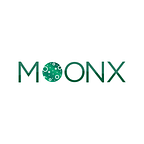The Run on the Shadow Banking System and Bank Losses during the Financial Crisis
Until 2007, shadow banking activities in the United States and Europe had grown very rapidly, but many of them collapsed during the financial crisis. Over time, the U.S. and European financial systems had come to rely increasingly on repo and securitization financing, through conduits and structured finance vehicles, while money market mutual funds (MMFs) and other funds benefited from inflows due to ample global liquidity. Eventually, rapidly rising defaults in the U.S. housing market in 2007 led to a liquidity crisis in the markets for private-label securitization and asset- backed commercial paper (ABCP) as investors refused to roll over their holdings (Acharya, Schnabl, and Suarez 2013). MMFs experienced a run in September 2008 after the default of Lehman Brothers, and MMF sponsors were unable to absorb the losses.
Contingent claims analysis (CCA) can be used to model banks’ relationships with the U.S. shadow banking system. In essence, CCA models the financial system as a chain of interlinked, contingent claims (that is, risk-adjusted balance sheets). The claims include cross- holdings of risky prime and subprime debt. They also include residential mortgage-backed security tranches held in asset-backed commercial paper conduits and structured investment vehicles (SIVs) financed by short-term funds. Banks provided explicit liquidity and credit guarantees to ABCP conduits and SIVs and short-term loans to nonbank mortgage origi- nators. “Monoline” insurers provided insurance against losses on ABCP and SIV borrowing.
In each risk-adjusted CCA balance sheet, assets equal equity and risky debt. An entity’s equity can be modeled as an implicit call option on its assets. Risky debt equals the default-free value of debt minus the expected loss due to possible default and can be modeled as an implicit put option. If a third party (say, a bank or a monoline insurer) is providing a debt guarantee, the value of this guarantee can also be modeled as an implicit put option. For example, if commercial paper lenders provide short-term funds to an SIV with credit puts from a bank, the commercial paper provider is “long” the default-free value of the short-term debt, but the bank is “short” the implicit put option — that is, it provides a guarantee.
The CCA model of major U.S. and European banks captured a significant increase in expected losses as the crisis unfolded. From August 2007 to March 2009, bank liabilities rose by 32 percent (in part because they brought SIVs onto their balance sheets), and total market capitalization fell by 74 percent. Expected losses embedded in their liabilities (that is, implicit put options with three-year horizons) peaked at $550 billion in March 2009 and averaged $395 billion between September 2008 and August 2009. The activation of bank credit puts (guarantees) provided to ABCP and securitization vehicles contributed to this severe negative financial shock to the banks. Moreover, as housing prices began to fall in 2007, widespread mortgage refinancing led to a “refinancing ratchet effect” because higher interest rates applied to the refinancing, which dramatically increased mortgage defaults. Banks suffered directly from losses on residential mortgages because of a severe underestimation of the correlation between house prices and mortgage default (Khandani, Lo, and Merton 2013). This increased potential resi- dential mortgage losses to $1.7 trillion (inferred from implicit put options on mortgage debt) from June 2006 to December 2008.
In this case, it also demonstrates how rapidly risk can increase for banks when they guarantee their off-balance-sheet vehicles when the latter engage in a search for yield that relies on short-term funding and funding backstops from parent banks.
